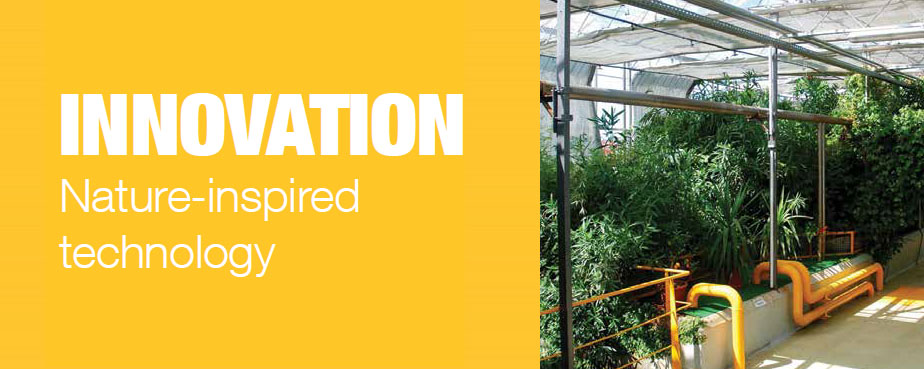ENGINEERED EXCELLENCE

MURRAY & ROBERTS WATER PARTNERS WITH GROUNDBREAKING WASTEWATER TREATMENT TECHNOLOGY
Murray & Roberts Water has entered into a licence agreement with
Organica Water for their ground-breaking wastewater treatment
technology.
“We’re extremely proud of this partnership, which gives us a unique
edge in the local wastewater treatment sector. The technology has
been proved in countries like France, China, Indonesia and we see
it having still more potential in Africa considering our rapidly growing
cities as well as an increasing need to upgrade aging infrastructure
as well as energy conservation.” Harry Singleton, Operations
Executive for Murray & Roberts Water comments.
This nature-inspired technology uses natural root systems along
with root-mimicking media in a process that can be used in urban
settings with no bad odours.
Organica’s wastewater treatment works are called water
reclamation gardens, because they look like botanical gardens
rather than tradition works. Enclosed in glass houses or attractive,
but simple shading structures to protect plants from extreme
weather, the gardens offer a number of benefits including better
treatment characteristics, a smaller physical footprint, lower
operating costs and positive aesthetics. This ensures higher water
quality; no reduction in value of nearby properties; reduced energy
costs and an affordable upfront investment.
Since reclamation gardens are attractive and don’t generate
unpleasant smells, they are ideal for construction in cities and
urban areas. “Urbanisation is causing a massive growth in city
populations, for example in Gauteng approximately 300 000 people
move to the province each year and this requires almost a new
city’s worth of infrastructure to be built, while existing water scarcity
is further exacerbated” says Péter Varga, Business Development
Manager for Organica Water.
“The latest in food-chain reactor technology integrates fixed-film
activated sludge processes, these solutions have developed over
the last decade to become very successful and sustainable. Our
application of water reclamation gardens has the potential to
change mind-sets about wastewater reuse and recycling as well
as the location of this type of infrastructure, enabling placement
in urban neighbourhoods, close to where the wastewater is
generated” continues Varga.
Presenting a massive cost-saving, water reclamation gardens
reduce the need for expensive underground piped infrastructure to
carry sewage out of cities. If the technology is then further applied
to polish the water at the final stage of treatment, it can also reduce
spend through water treatment bringing fresh water to the urban
population.
Using Organica’s technology and plant roots, biomass is significantly
increased in the water reclamation garden reaction chambers and
provides a breeding ground capable of housing over 3 000 species
of micro-organisms instead of the 300 species found in traditional
wastewater treatment works.
“In a conventional wastewater treatment works reaction chamber,
the activated sludge concentration is approximately 5kg per cubic
metre. The plant root structures and Organica’s specialised media
increase the surface areas for sludge attachment to take place, while
also creating a better habitat for micro-organisms to live and multiply.
This allows for greater biodiversity and facilitates biomass increase to
up to 15kg per cubic metre” explains Varga.
A better biomass-to-volume ratio means the system can be up to
50% smaller in physical footprint than conventional treatment plants,
which makes it more affordable, especially in an urban environment.
The lower geographic footprint also makes the technology ideal for
retrofitting existing works that may no longer be capable of servicing
growing populations nearby.
“The timing of our partnership with Organica is opportune, as
wastewater infrastructure in South Africa is in need of innovative and
sustainable thinking and we believe our combined technology and
experience can offer the domestic solutions required” concludes
Singleton.

